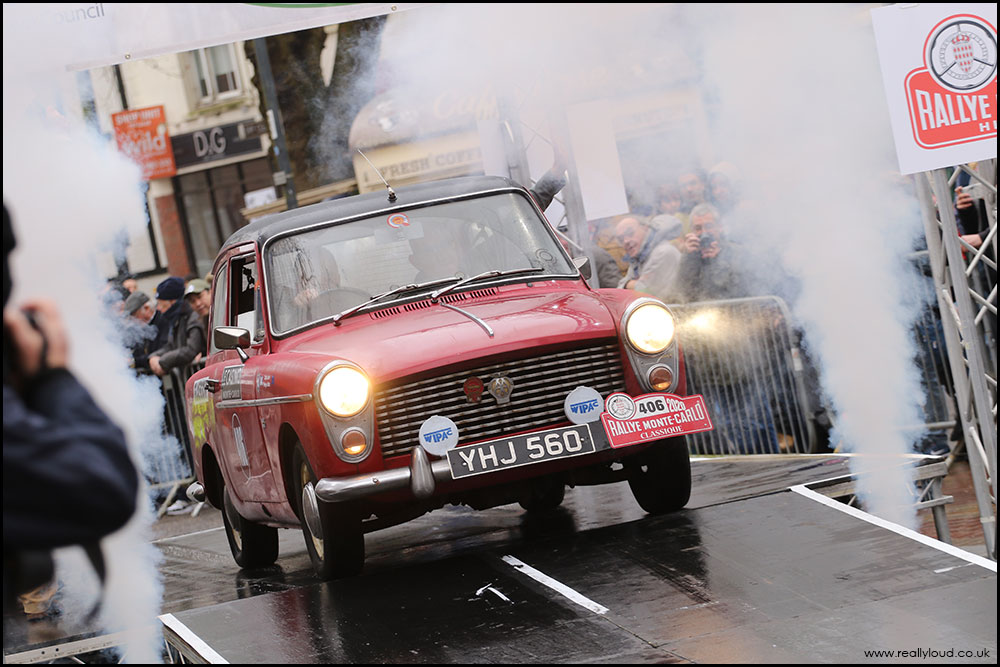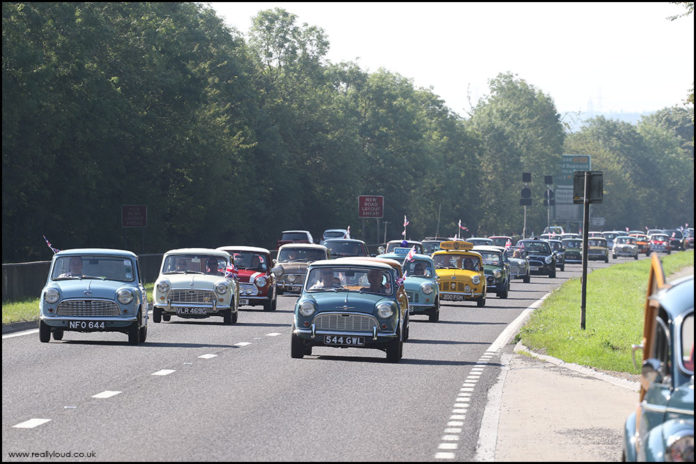The Mini has been recognised as a British institution ever since the first car rolled off the line exactly sixty years ago. It became a symbol of motoring freedom, character, and ingenuity. Of the number of motoring landmarks celebrated this year, the Mini has to be the easiest to identify with, motorists of a certain age have a connection or story about the Mini.
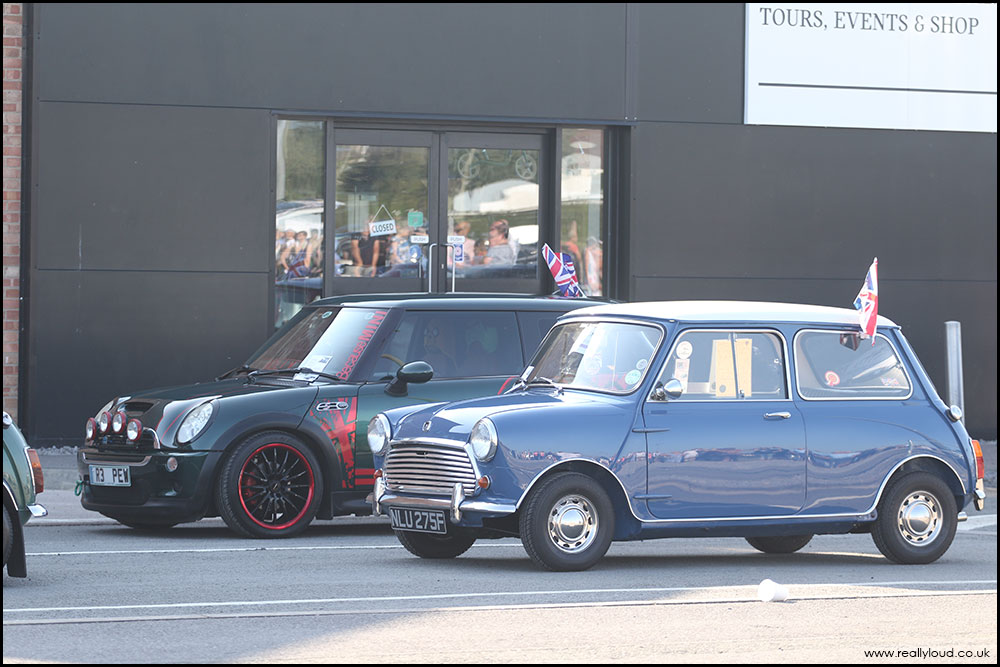
Reallyloud spent a cloudless bank holiday Monday morning at the former Morris Motors factory, now known as the Mini Factory in Oxford. The original Mini was built at the plant from 1959 to 1969 but it’s the inaugural test drive that offers the main reason for this gathering. On the 26th August 1959, a production engineer from the Cowley factory drove a prototype Mini during a rainstorm to the Headington Roundabout (just 2 miles away) and back again. This was to show that the standard level of weatherproofing sealing on the prototype was not up to scratch.
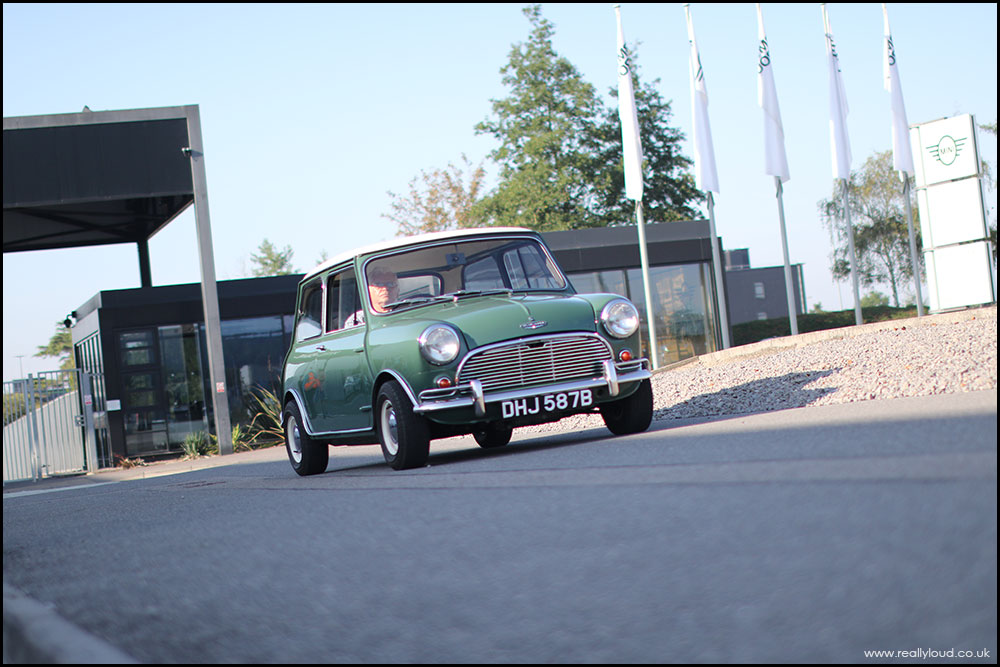
The sixty Minis taking part on the run were not specifically chosen for their age or rarity. This, therefore, allows everything from a mint 1959 ex-press car to a tatty ‘90s Cooper to brand new BMW Minis to be eligible for the cavalcade, thus reflecting on the diverse nature of the Mini brand.
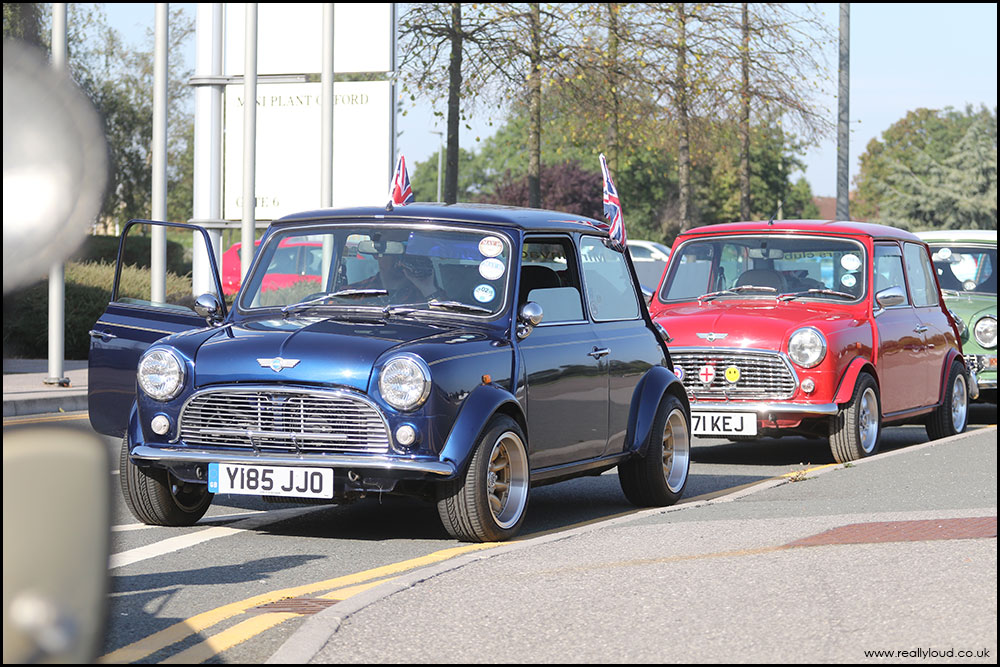
Tanya Field and Andrew Roberts have been instrumental in organising this event, carefully collating cars that not only represent the classic 1960s models but also contacting owners of press cars, commercial vehicles, locally registered examples as well as the very latest models to join in this once in a lifetime opportunity.
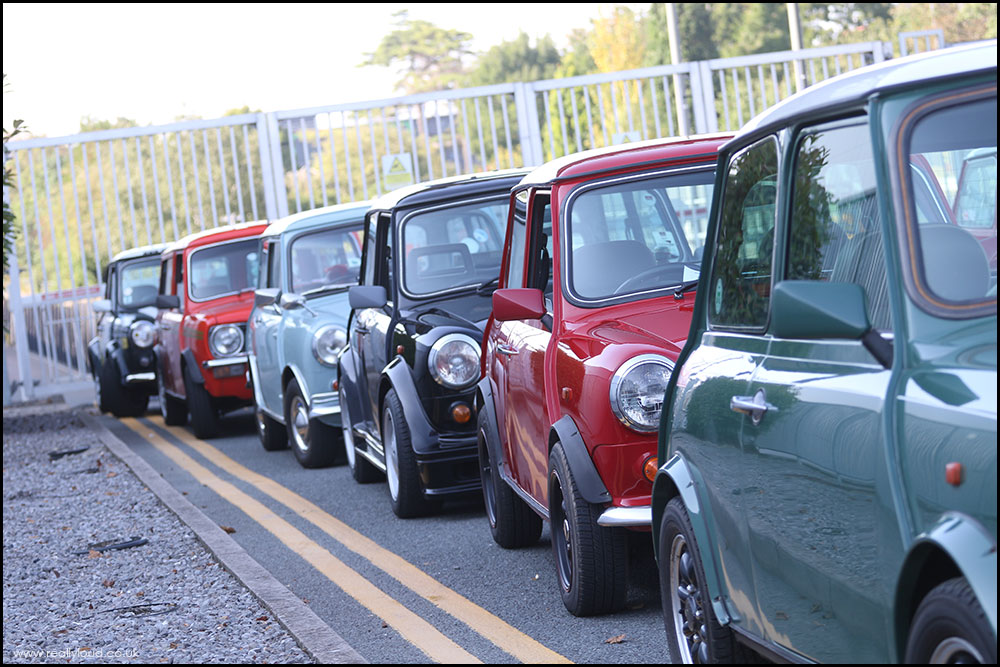
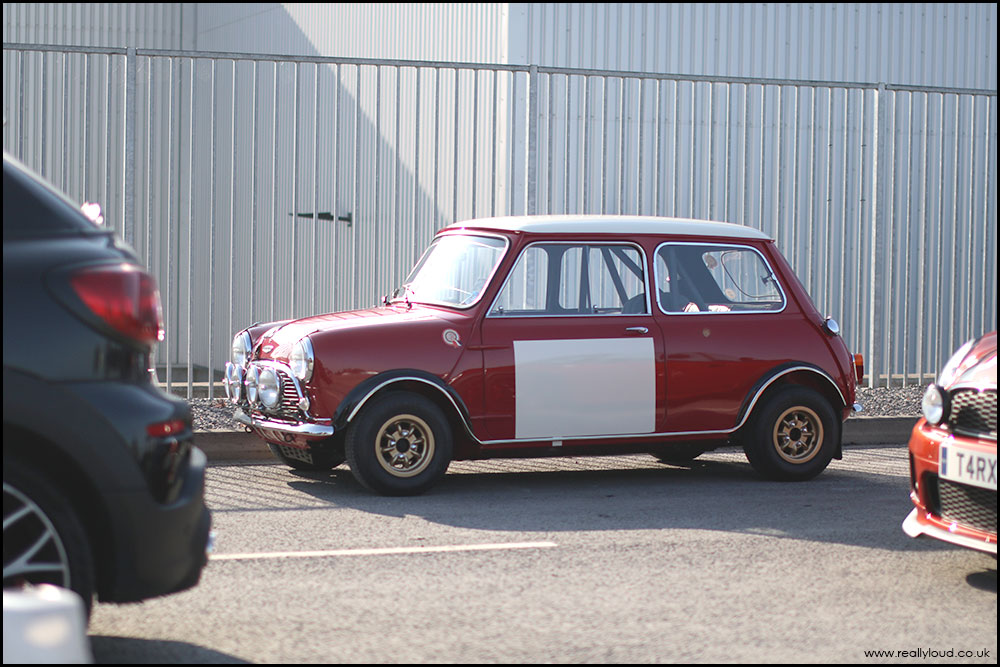
Two columns of thirty cars were lined up in the Mini factory car park area. Cars had travelled from all over the UK to take part, but there was an emphasis on locally registered cars and local owners.
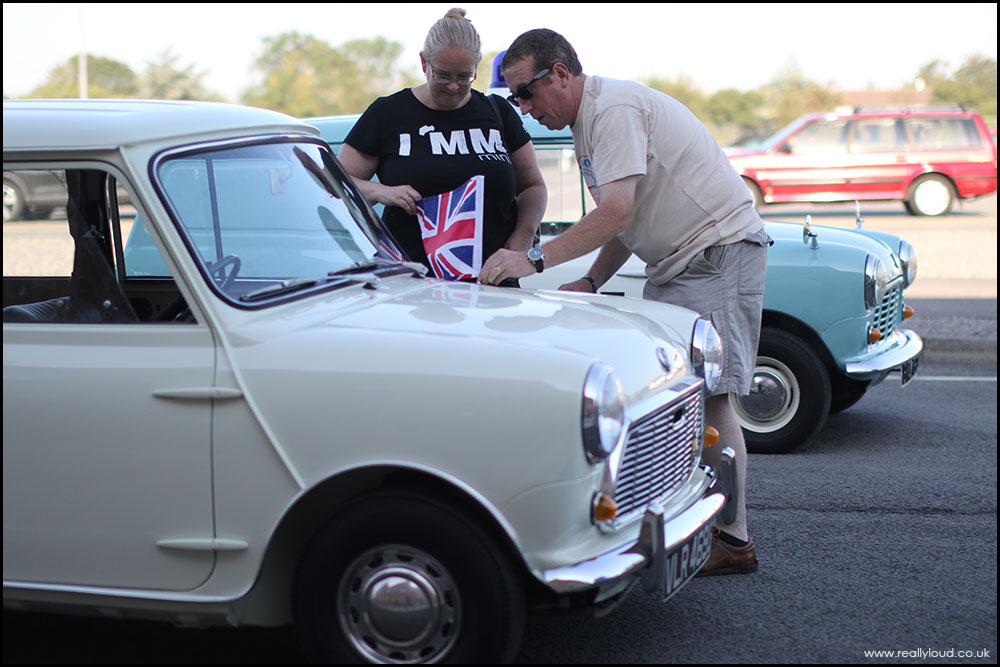
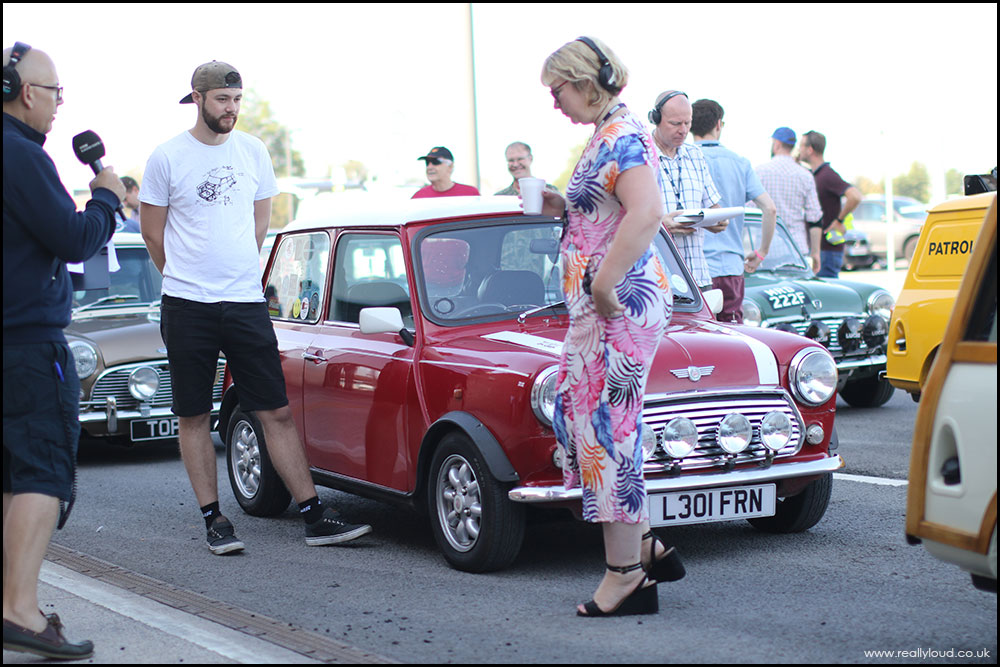
The local media covered this iconic journey with radio coverage. At one point there was even a ten-minute road closure to allow the Minis to travel to their destination. Additional patriotic preparations were required for the short journey over to Cutteslowe.
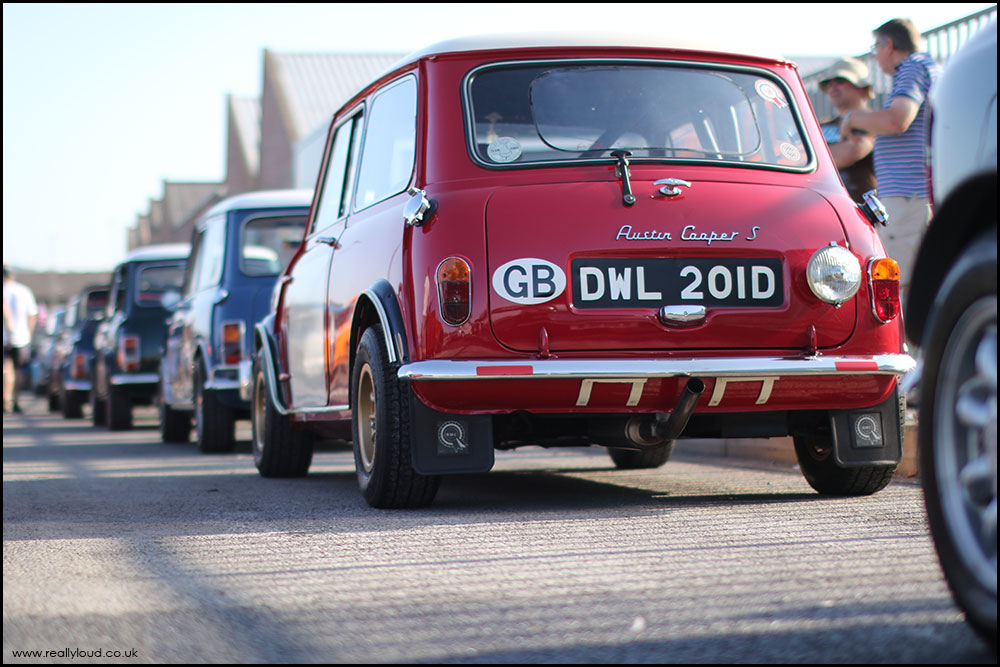
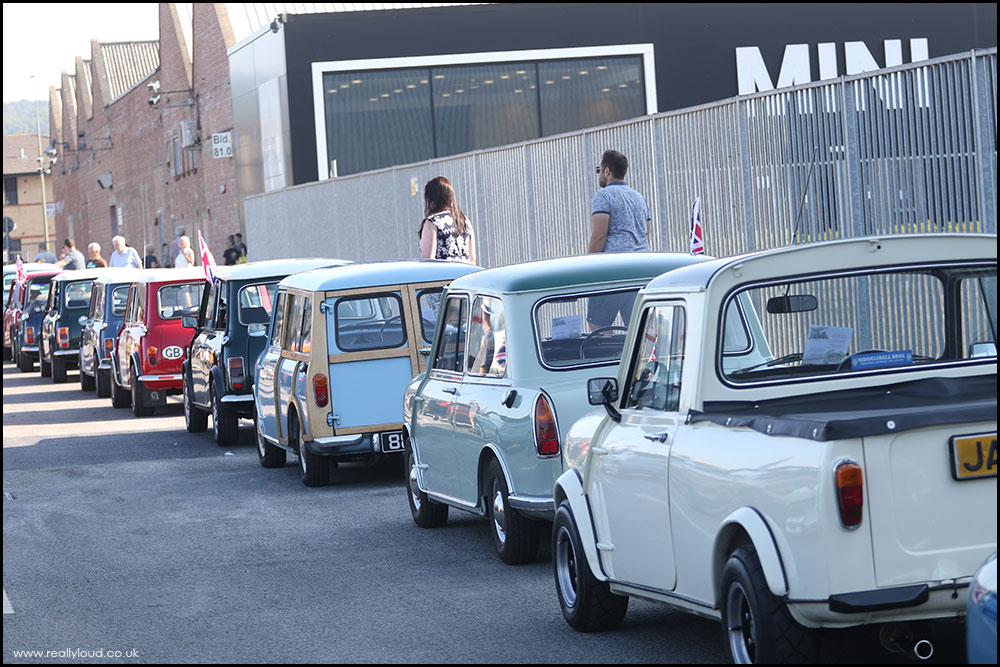
The sound of the tens of dozens of A-series engines cracking into life, followed by that familiar gearbox whine was quite an emotive experience.
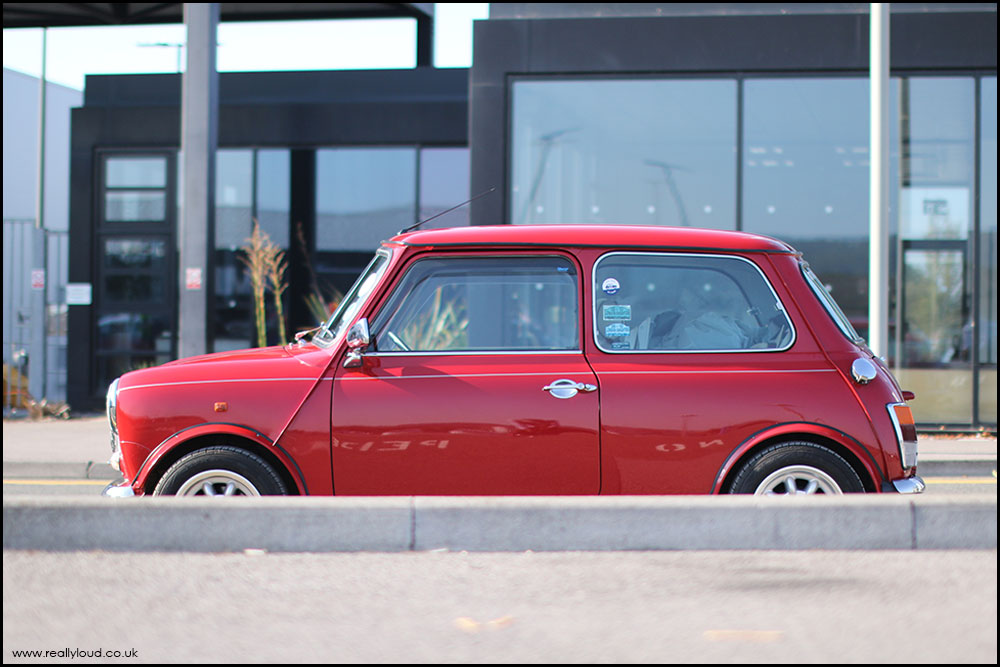
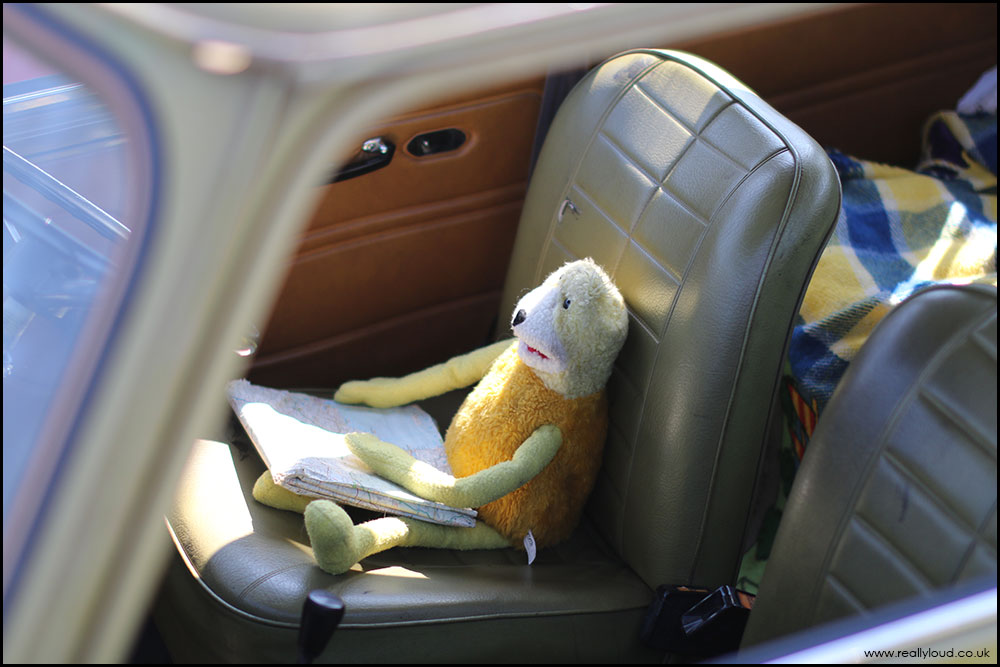
One of the most recognisable shapes in motoring history, the friendly nature of the Mini is also reflected in the owners’ personal touches to their cars.
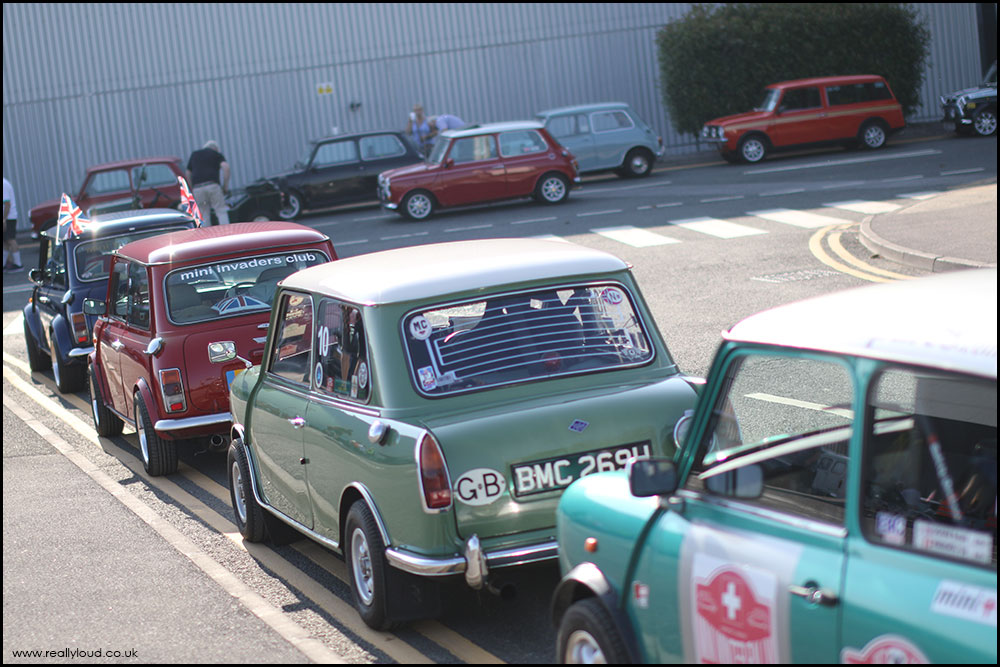
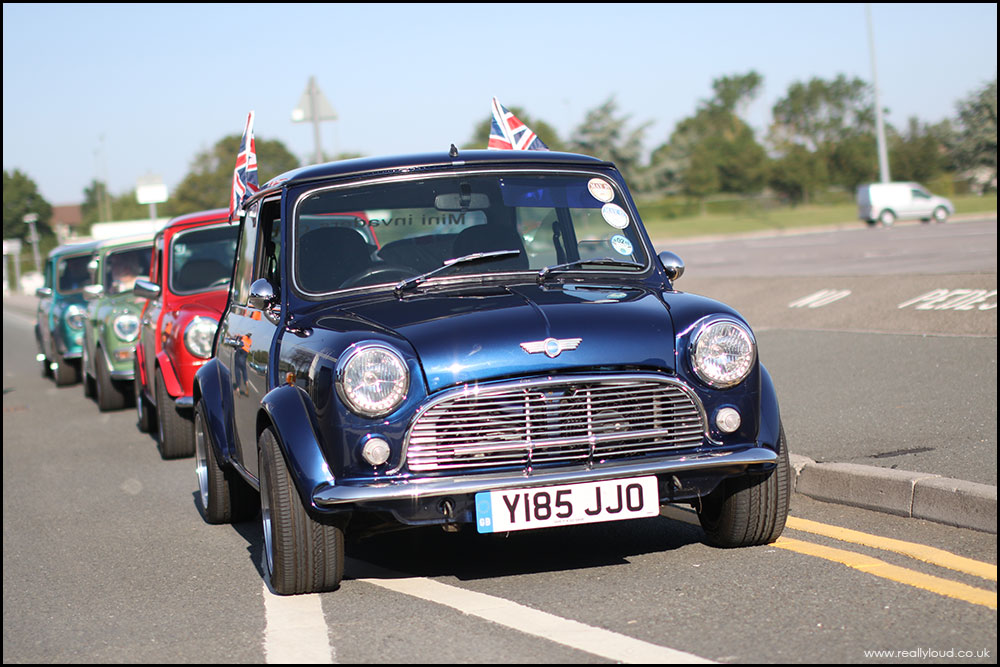
A handful of back up cars was on call, just in case one of those 60-year-olds failed to crank into life – luckily the back-ups were not called into action but were invited to the party anyway.
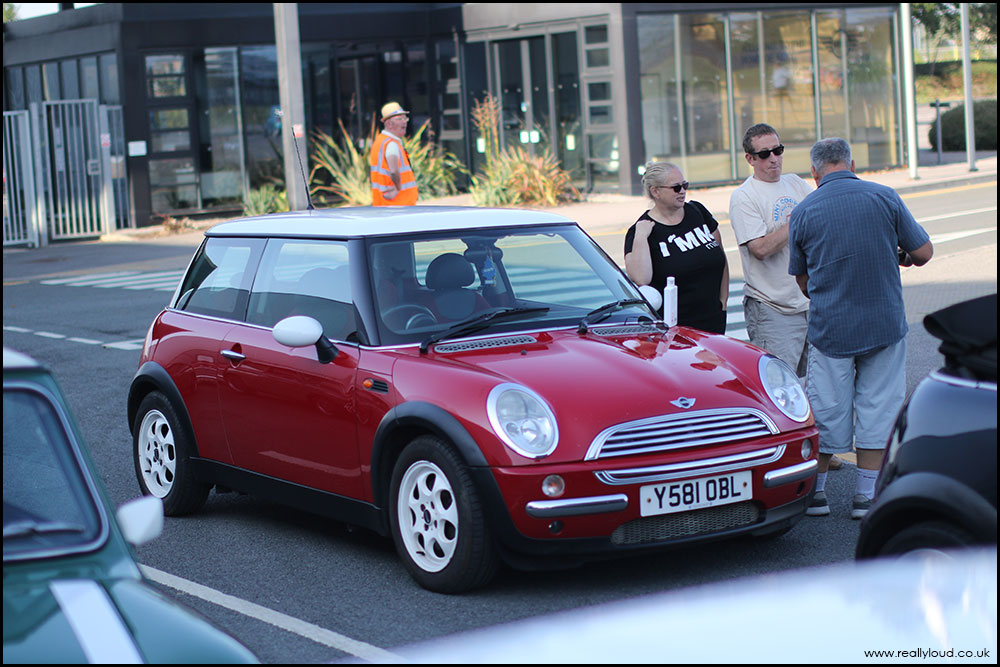
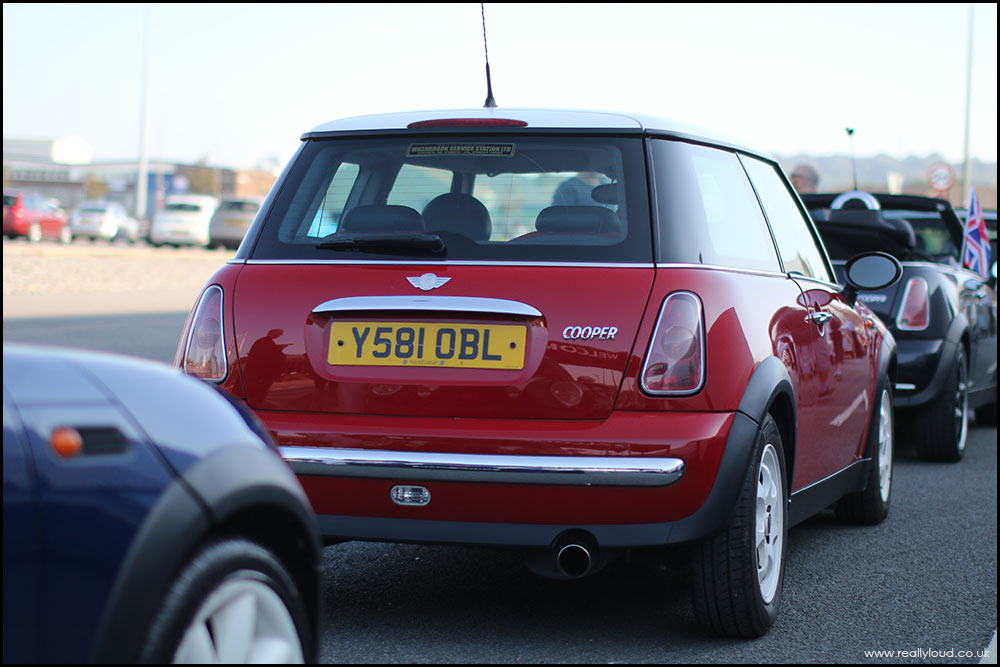
Designer Frank Stephenson took a novel approach for the monumental task of redesigning the new Mini. He envisaged the original car had it been redesigned in 1969 and continued his sketch work evolution to each subsequent decade until he came up with the familiar 1999 design.
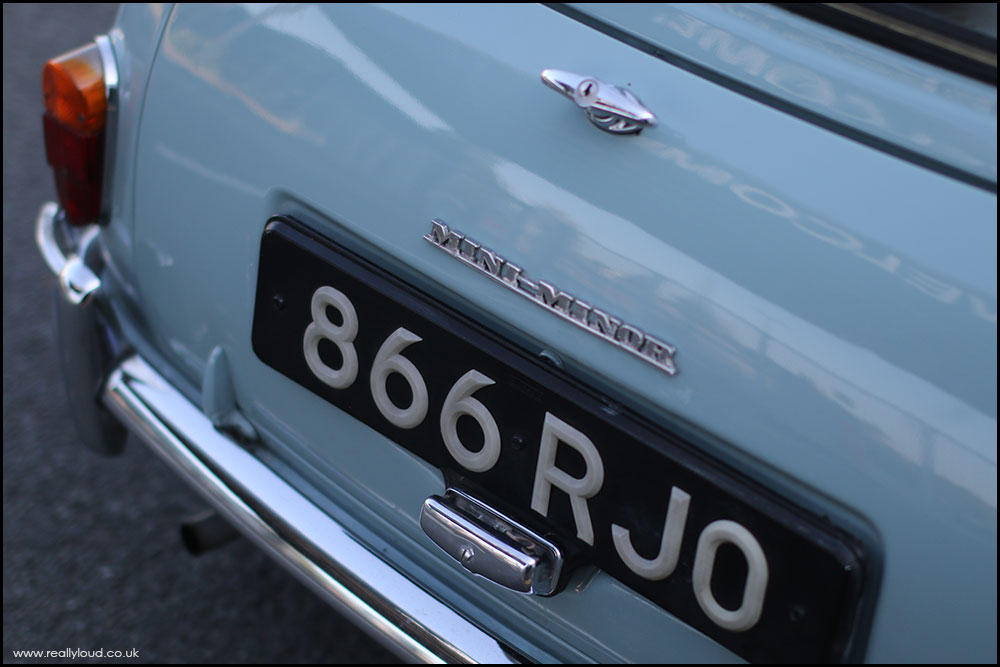
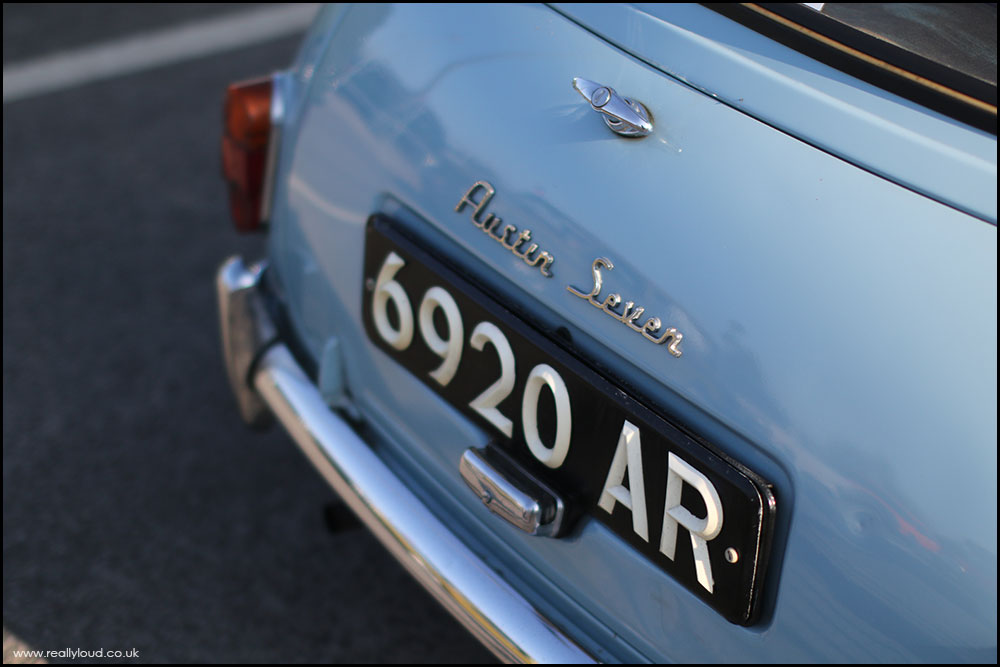
Austin cars were built in Longbridge, with Morris cars being assembled at Cowley. Equipment and trim including badges and grills, were the most noticeable differences.
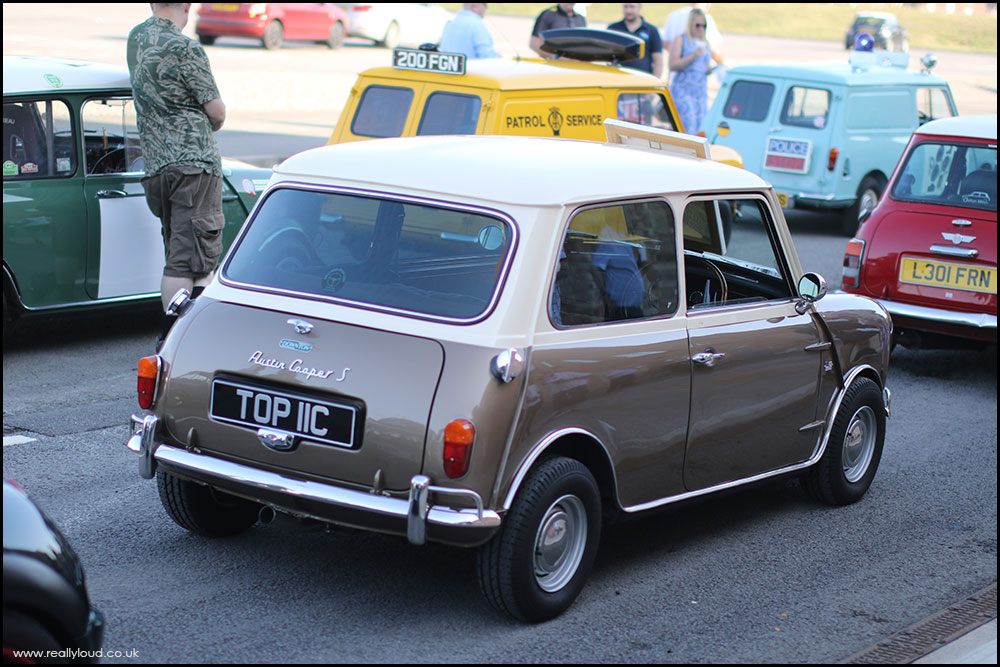
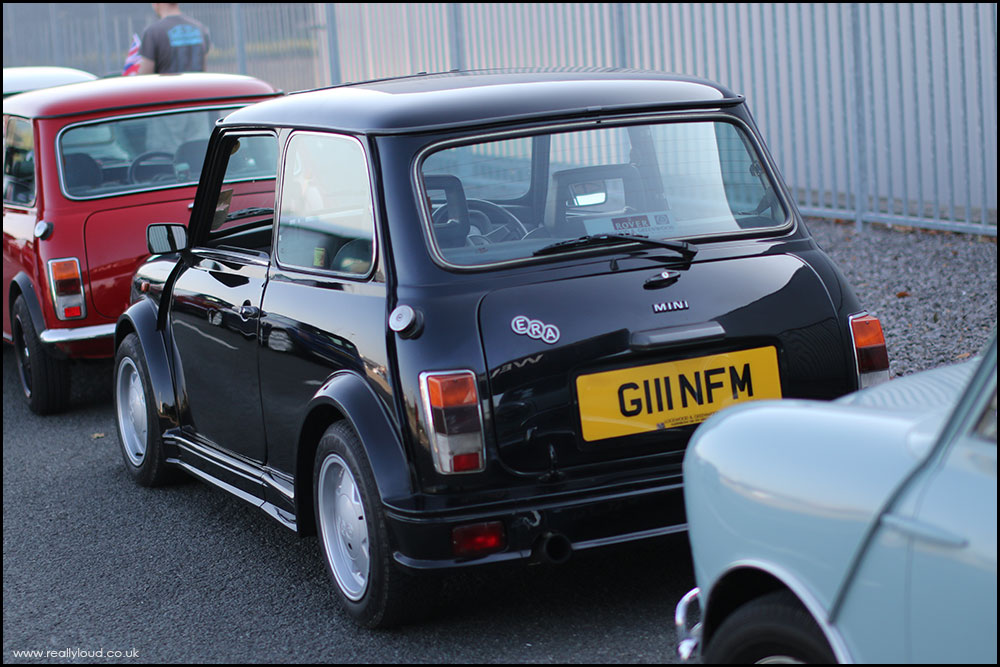
Variations on a theme. A replica of Steve McQueen’s Cooper S was specifically built for the 2015 Festival of Speed and the ERA Mini Turbo is one of 436 produced.
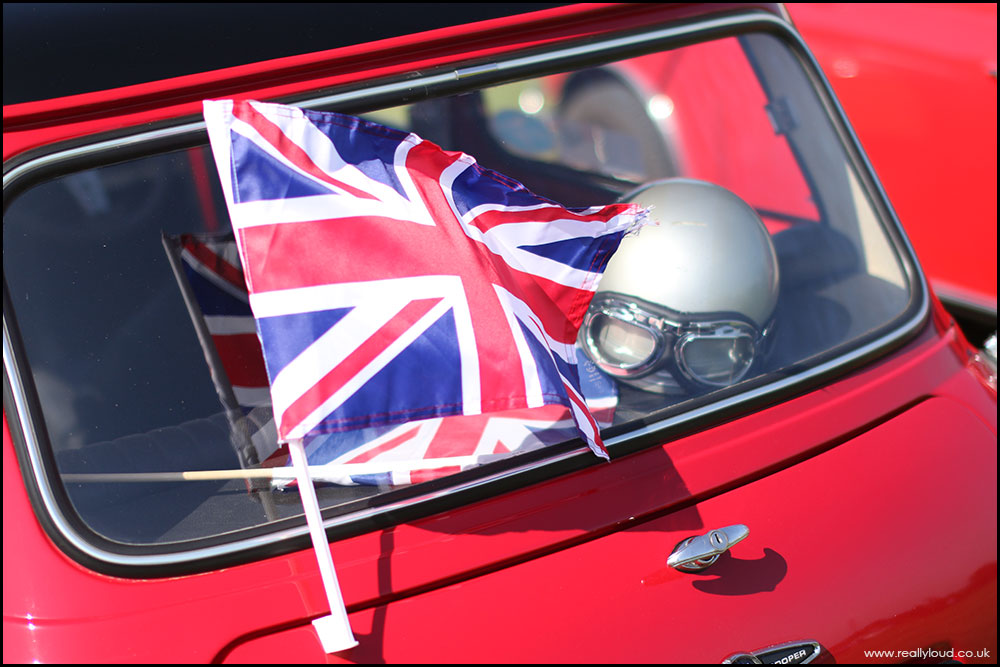
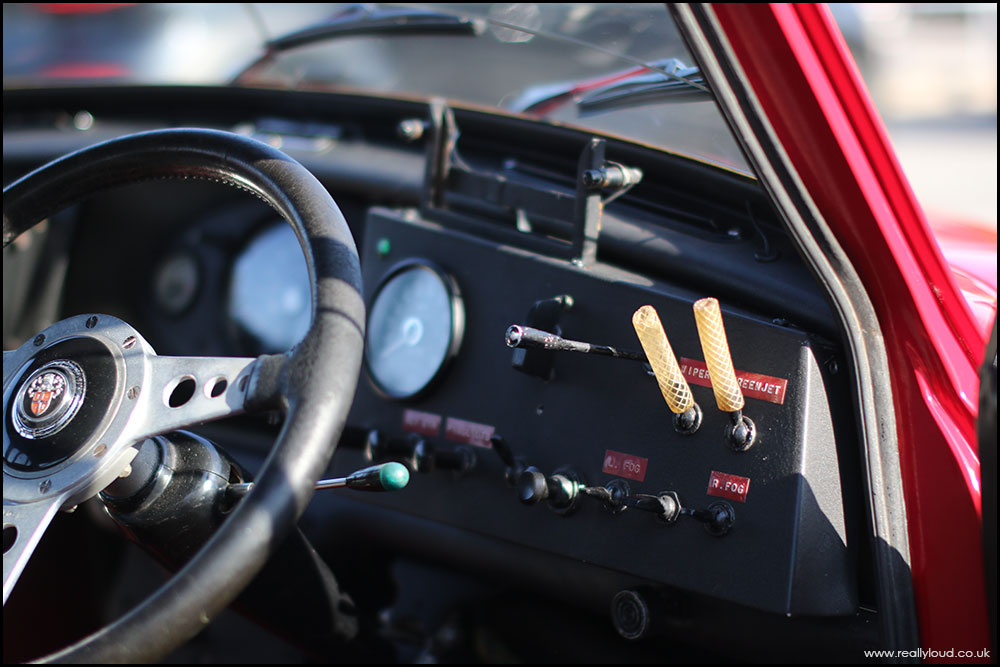
It wouldn’t be a Mini event without a reference to the Italian Job or its successful rally career. More than 5.3 million classic Minis were produced up to 2000 with the 10 million mark recently reached.
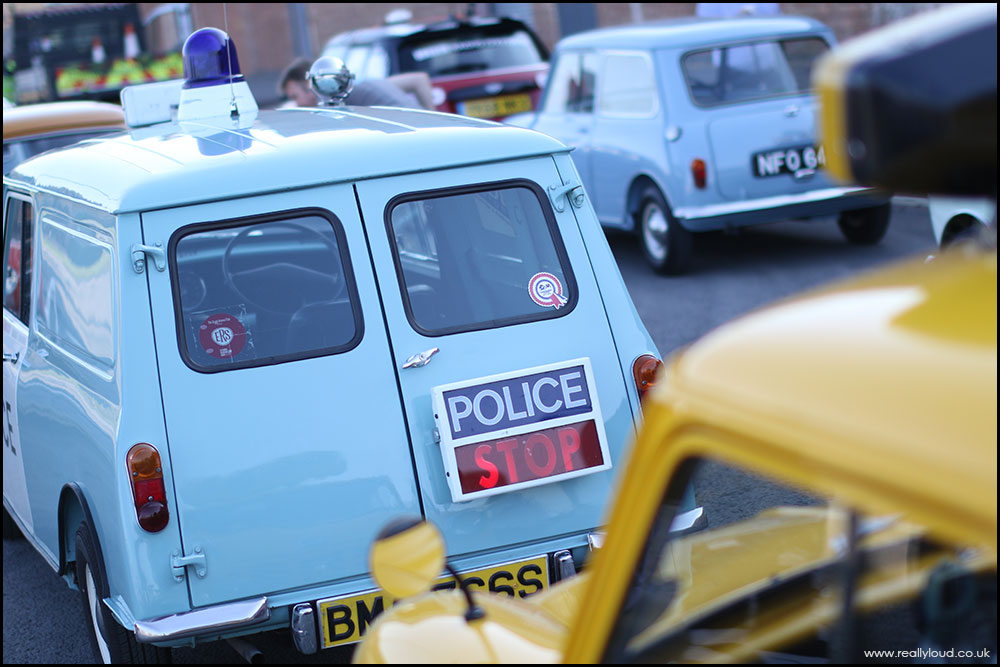
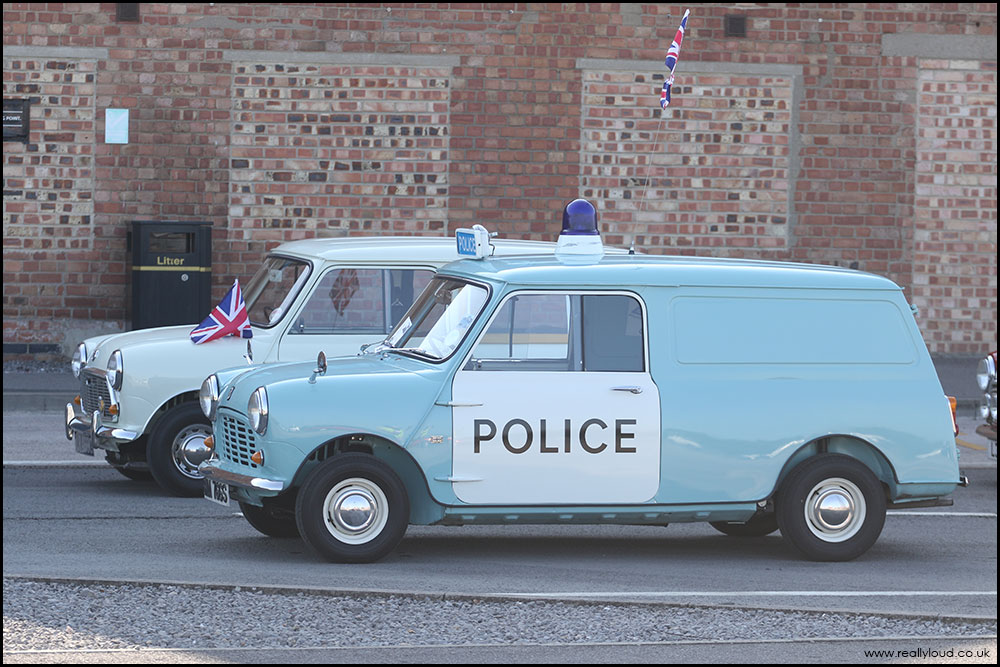
This genuine 1978 ex-Police van travelled from Guildford with a special dispensation by the Police to sound its siren while participating in the run to Cutteslowe!
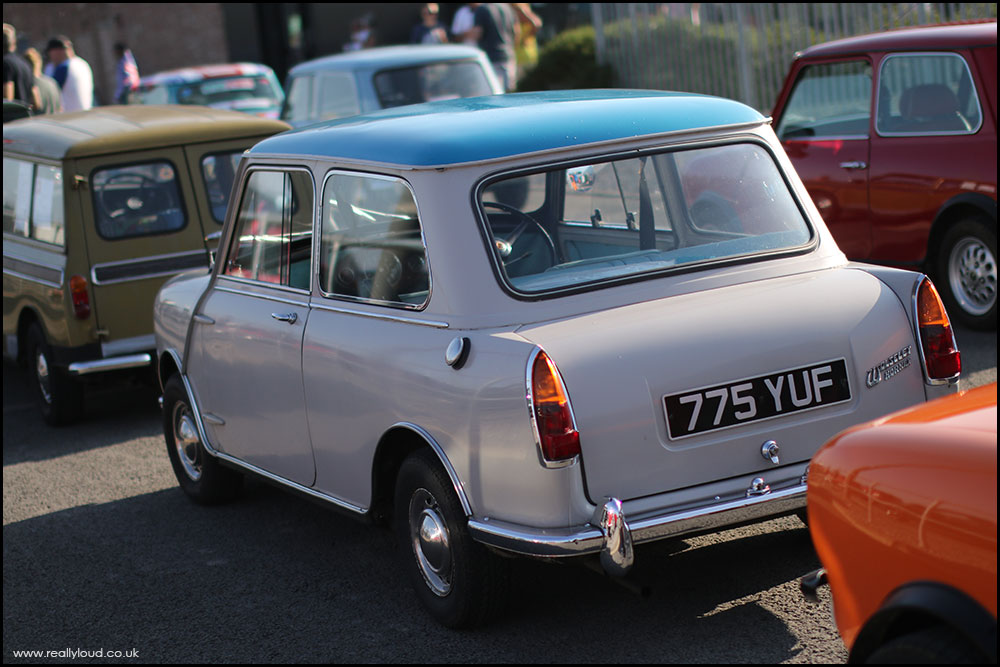
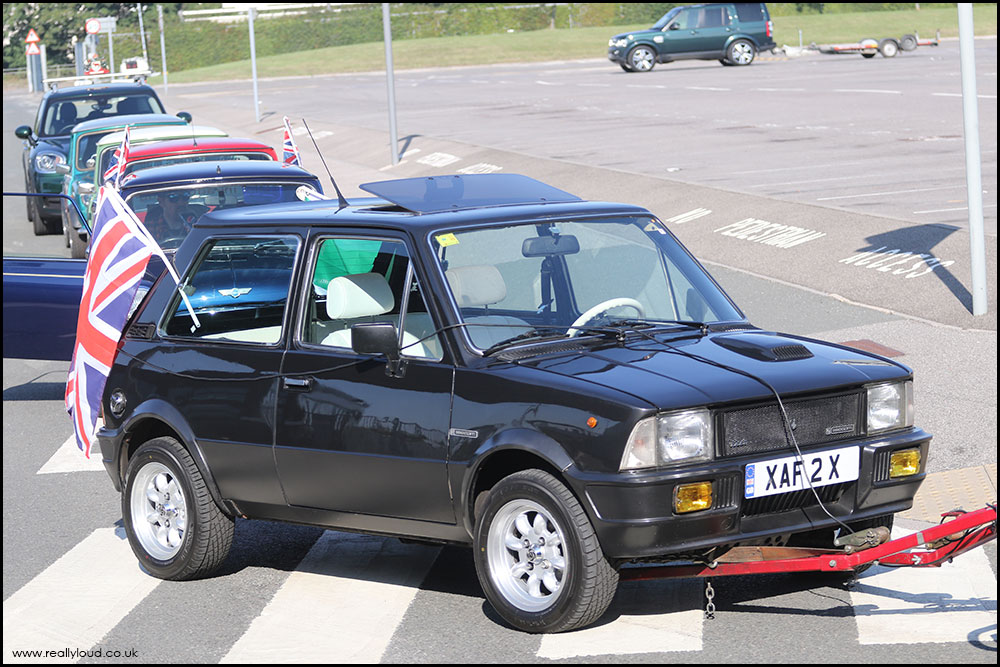
The invitation was open to all Mini derived cars, such as the luxury orientated Wolseley Hornet and Europe only Innocenti. Both retain the upright driving positions.
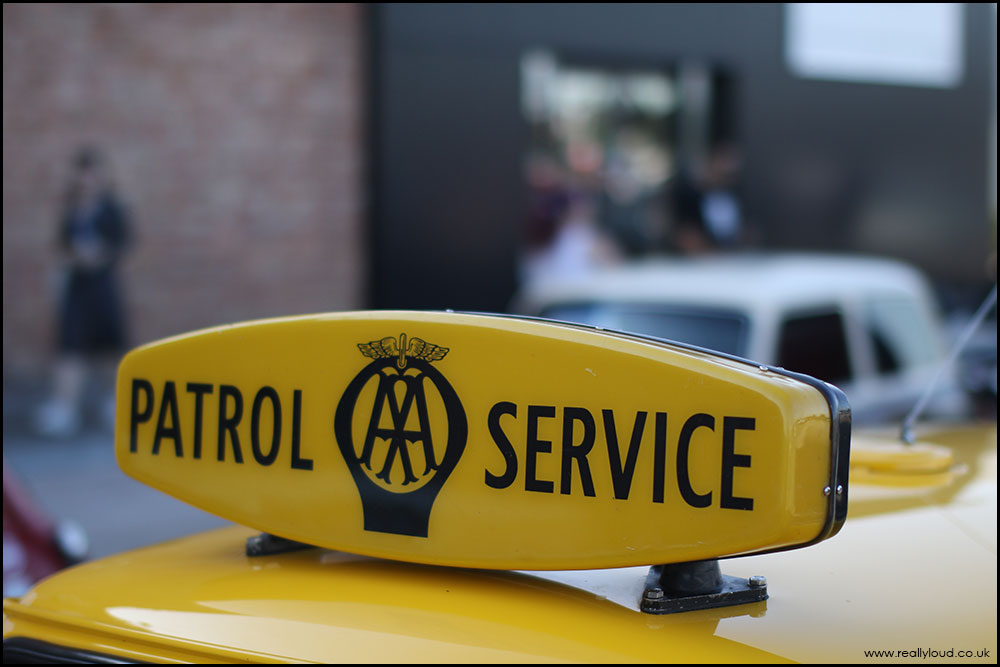
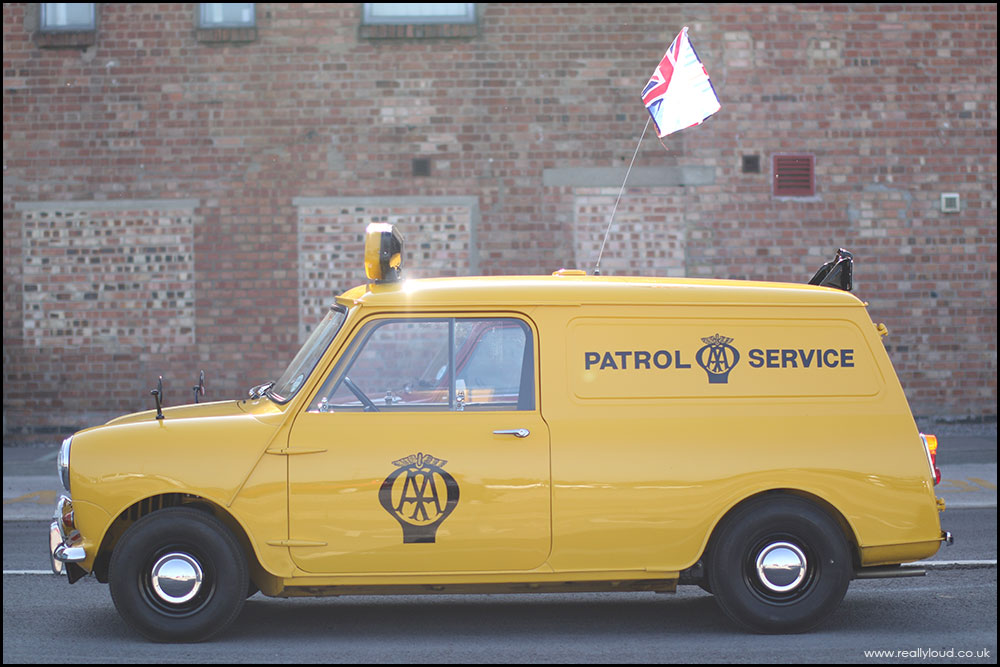
This breakdown van, maintained by the Automobile Association, is part of their heritage collection. The first AA vans were introduced in 1962 and eventually replaced their motorcycles and sidecars.
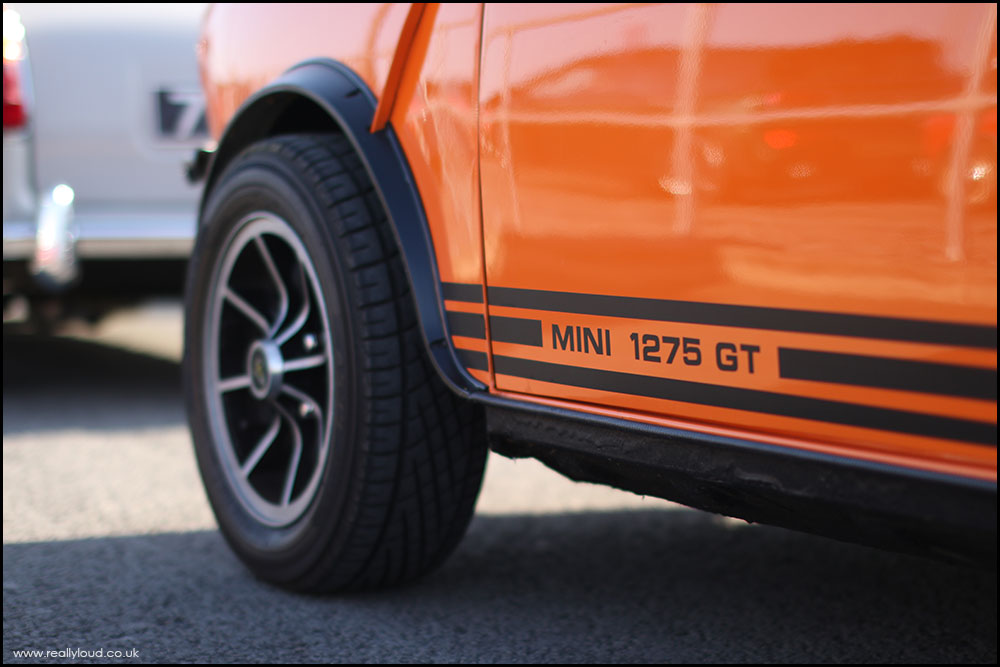
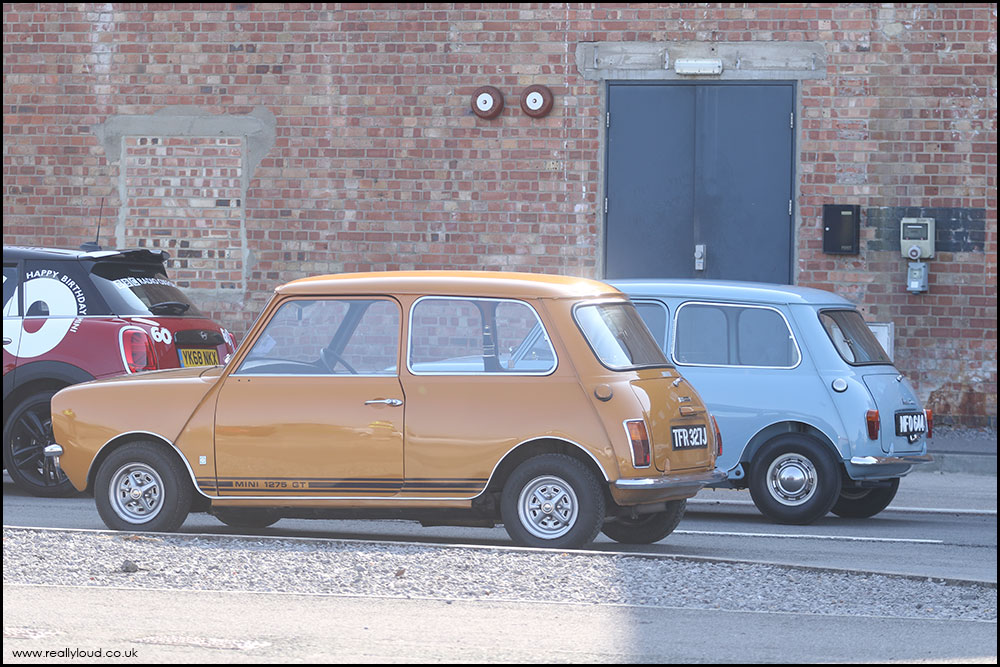
The 1275 GT replaced the much loved Cooper, and while it offered no performance gain, the public took to the car and it remained in production until 1981.
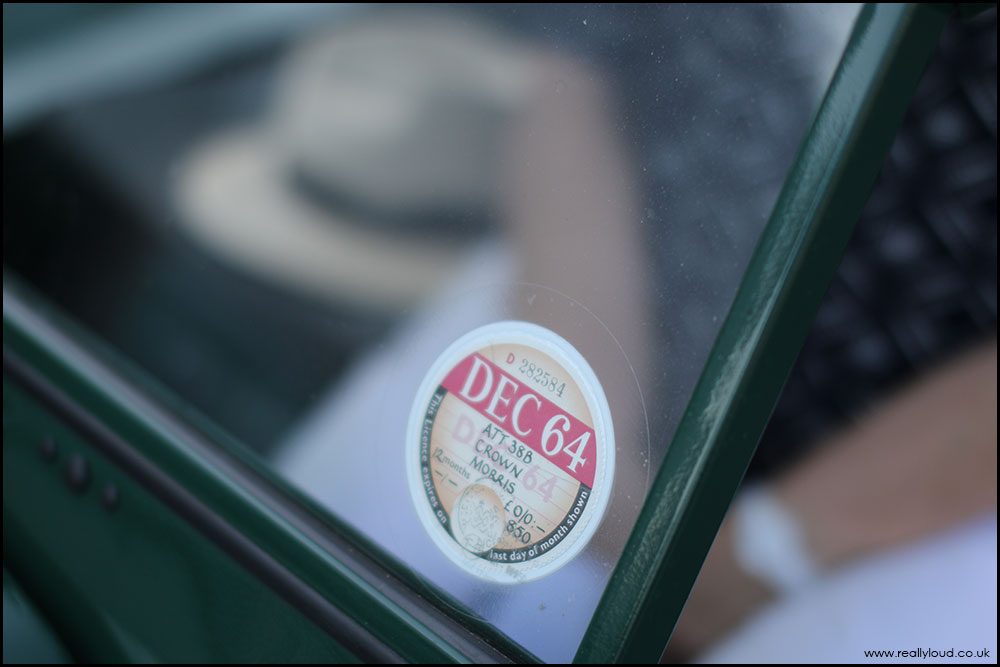
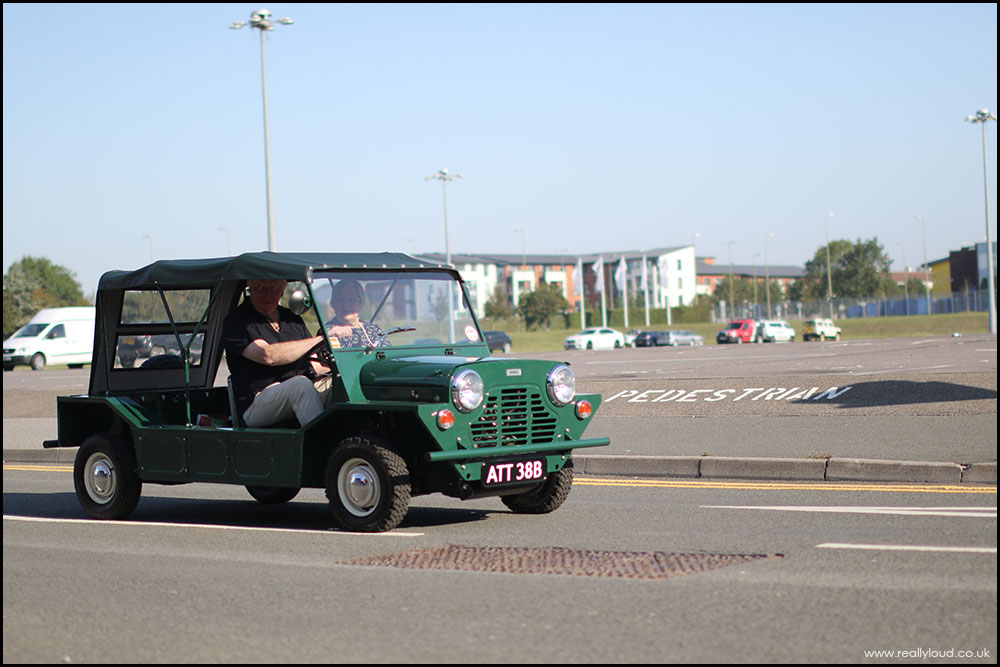
This Dartmouth ex-fire car utilised an ultra basic spec, including no heater, only one windscreen wiper, and no back seats. At one point it was the UK’s cheapest car.
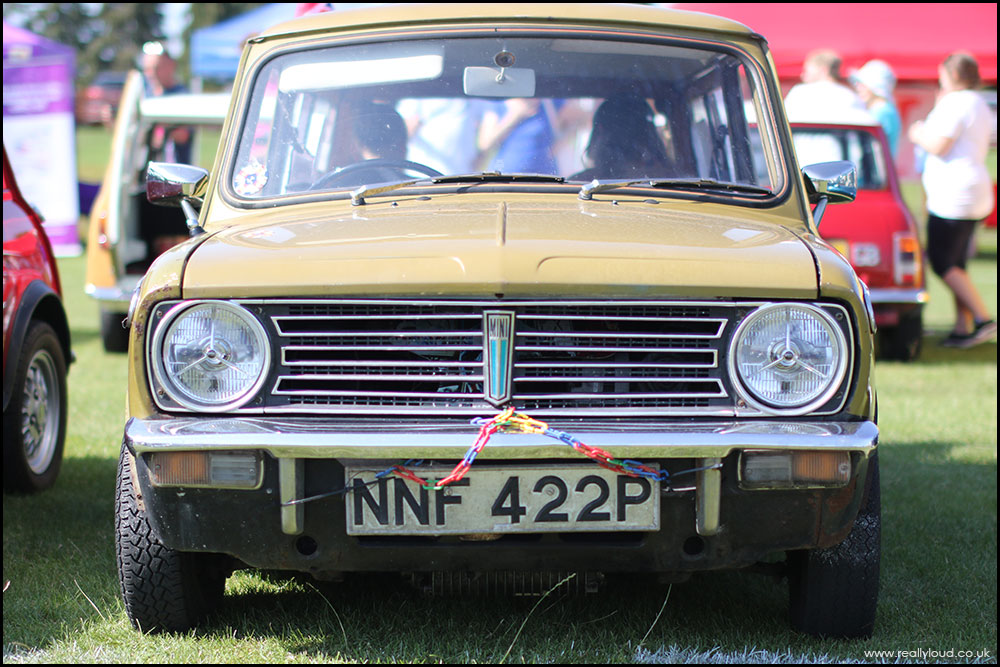
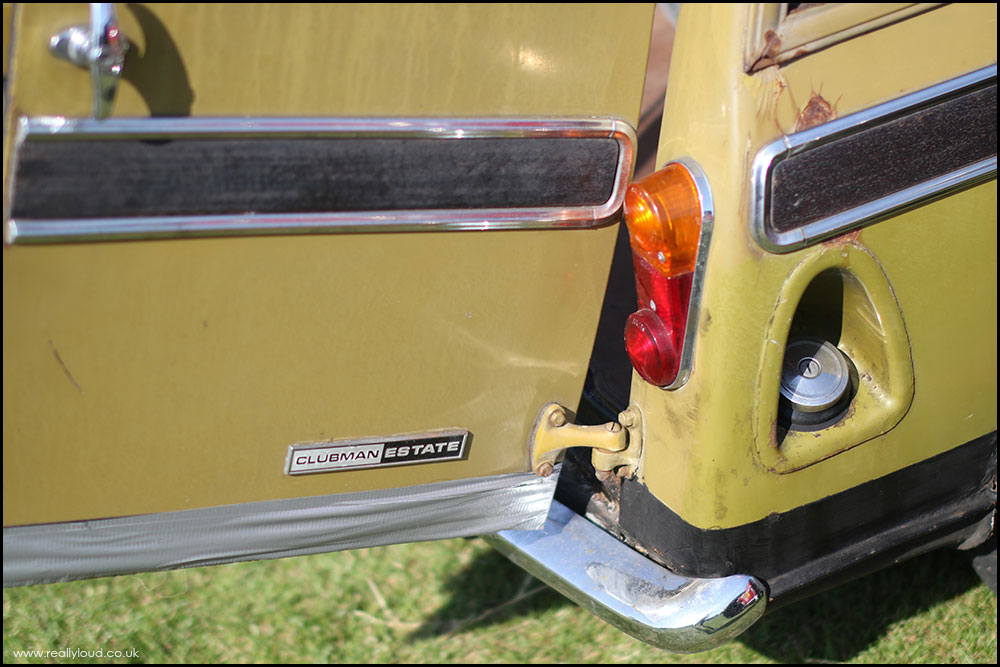
This utterly charming 1970’s Clubman estate is mechanically sound with authentic repairs and patchwork. This car will be restored to glory one day though.
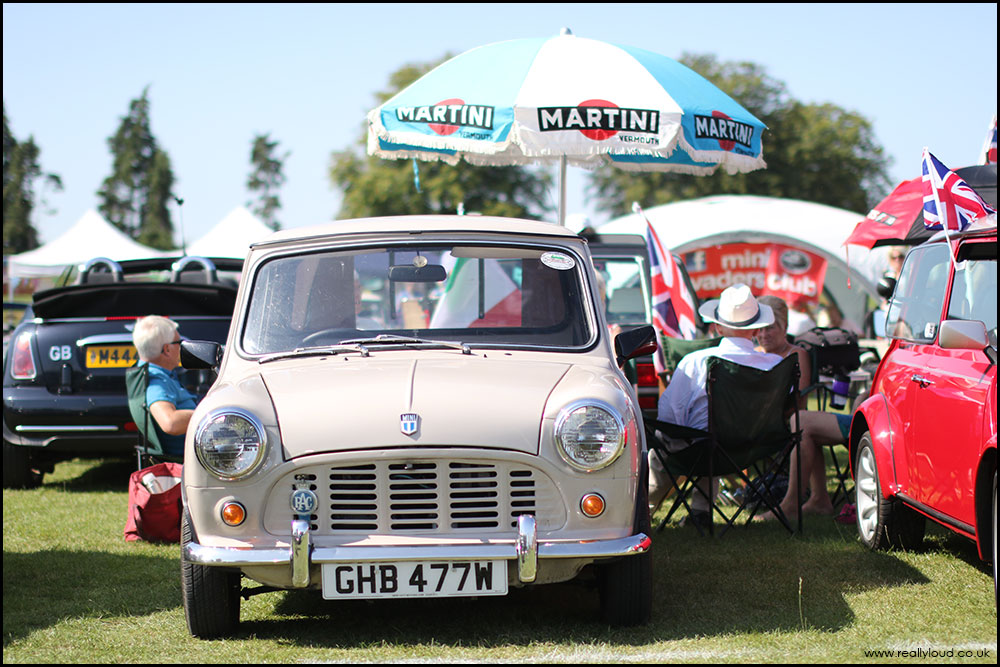
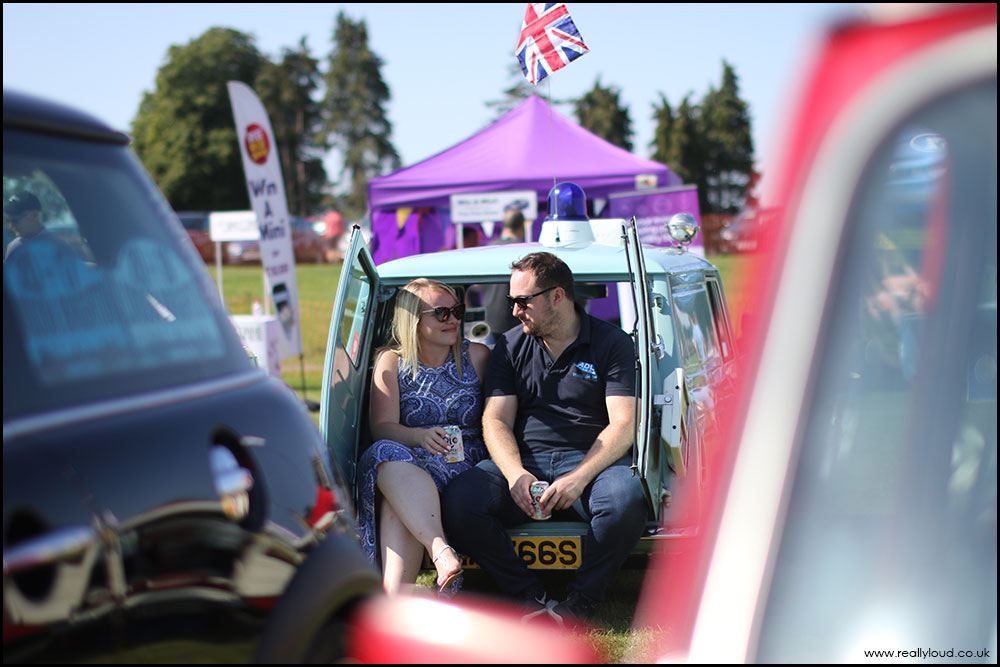
The historic run finished at Cutteslowe Park in North Oxford, joining the 12th Cowley Classic Car show held by The Rotary Club of Oxford.




